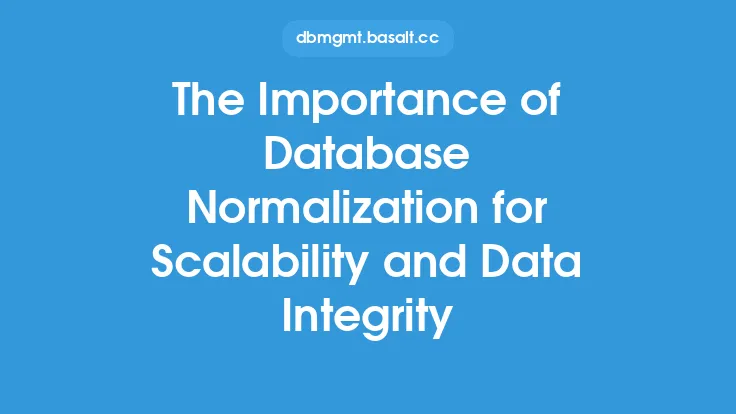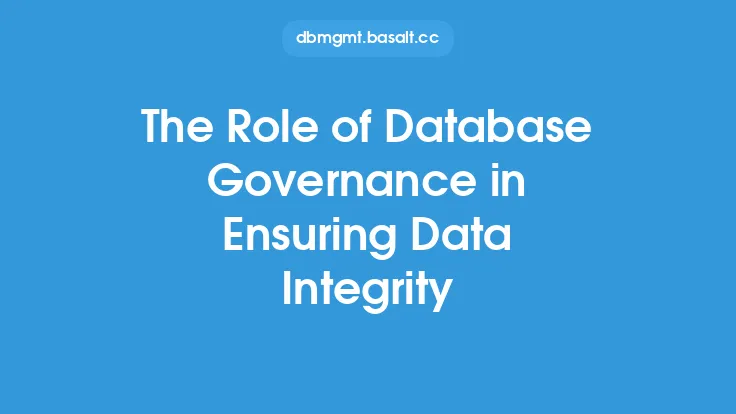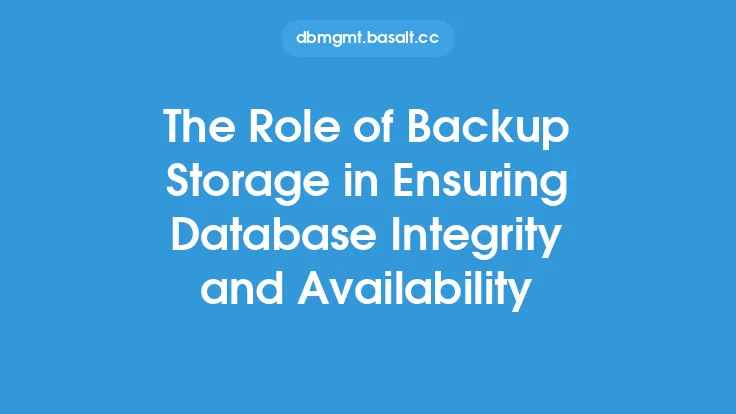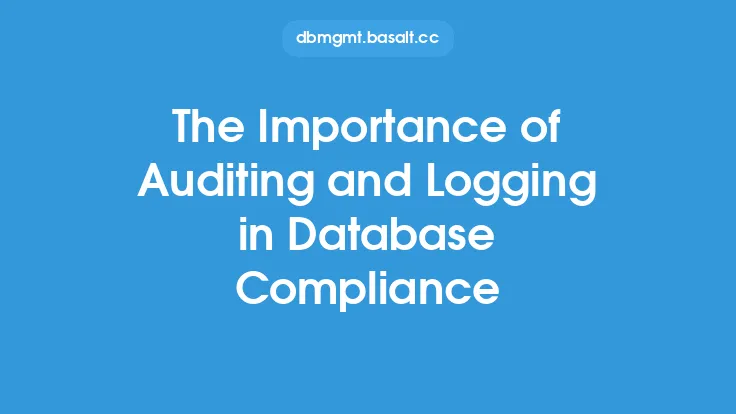When it comes to ensuring data integrity and security, one of the most critical decisions an organization can make is selecting the right database. A database is the backbone of any application or system, storing and managing vast amounts of data that are crucial to the organization's operations. With the increasing amount of data being generated and stored, the importance of database selection cannot be overstated. In this article, we will delve into the importance of database selection in ensuring data integrity and security, and explore the key factors that organizations should consider when making this critical decision.
Understanding Data Integrity and Security
Data integrity and security are two interconnected concepts that are essential to the reliability and trustworthiness of an organization's data. Data integrity refers to the accuracy, completeness, and consistency of data, ensuring that it is not modified or deleted without authorization. Data security, on the other hand, refers to the protection of data from unauthorized access, use, disclosure, disruption, modification, or destruction. Both concepts are critical to ensuring that an organization's data is reliable, trustworthy, and compliant with regulatory requirements.
The Role of Database Selection in Ensuring Data Integrity
Database selection plays a crucial role in ensuring data integrity. A well-designed database can help prevent data inconsistencies, errors, and corruption, while a poorly designed database can lead to data integrity issues. When selecting a database, organizations should consider factors such as data modeling, schema design, and data validation. A robust data model can help ensure that data is consistent and accurate, while a well-designed schema can prevent data inconsistencies and errors. Data validation is also critical, as it ensures that data is accurate and complete before it is stored in the database.
The Role of Database Selection in Ensuring Data Security
Database selection also plays a critical role in ensuring data security. A secure database can help protect data from unauthorized access, use, disclosure, disruption, modification, or destruction. When selecting a database, organizations should consider factors such as access control, authentication, encryption, and auditing. Access control ensures that only authorized users can access the database, while authentication ensures that users are who they claim to be. Encryption ensures that data is protected from unauthorized access, while auditing ensures that all database activities are tracked and monitored.
Key Factors to Consider in Database Selection
When selecting a database, organizations should consider several key factors, including scalability, performance, reliability, and compatibility. Scalability refers to the ability of the database to handle increasing amounts of data and user traffic, while performance refers to the speed and efficiency of the database. Reliability refers to the ability of the database to ensure data integrity and security, while compatibility refers to the ability of the database to integrate with other systems and applications.
Database Types and Their Implications for Data Integrity and Security
There are several types of databases, each with its own implications for data integrity and security. Relational databases, such as MySQL and Oracle, are well-suited for transactional data and offer robust support for data integrity and security. NoSQL databases, such as MongoDB and Cassandra, are well-suited for big data and real-time web applications, but may require additional measures to ensure data integrity and security. Cloud databases, such as Amazon Aurora and Google Cloud SQL, offer scalability and flexibility, but may require additional measures to ensure data security and compliance.
Best Practices for Database Selection
When selecting a database, organizations should follow best practices, including defining database requirements, evaluating database vendors, and testing database performance. Defining database requirements involves identifying the organization's data management needs and goals, while evaluating database vendors involves assessing the vendor's reputation, support, and pricing. Testing database performance involves evaluating the database's scalability, performance, and reliability, as well as its support for data integrity and security.
Conclusion
In conclusion, database selection is a critical decision that can have a significant impact on an organization's data integrity and security. By understanding the importance of data integrity and security, and considering key factors such as scalability, performance, reliability, and compatibility, organizations can select a database that meets their needs and ensures the reliability and trustworthiness of their data. By following best practices and considering the implications of different database types, organizations can ensure that their data is accurate, complete, and secure, and that their database is scalable, performant, and reliable. Ultimately, the right database selection can help organizations achieve their goals and objectives, while ensuring the integrity and security of their data.





